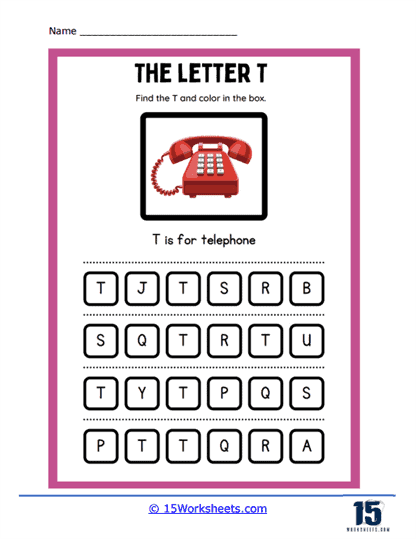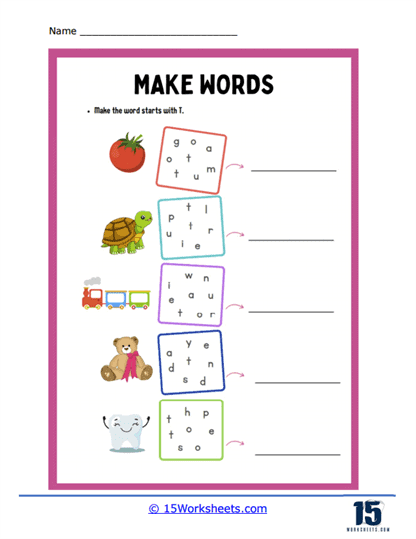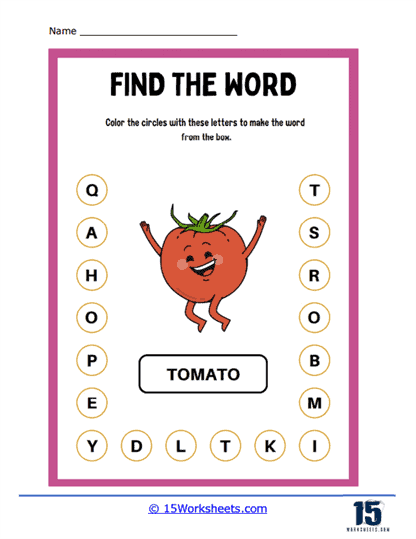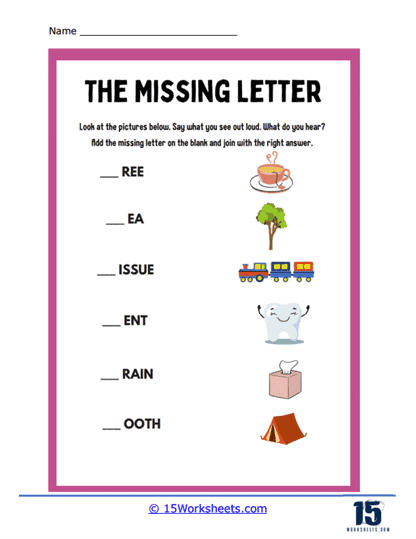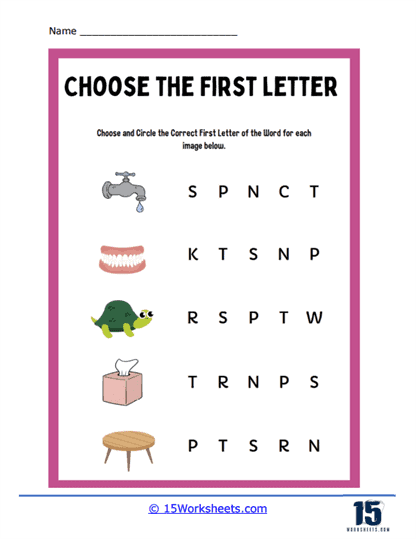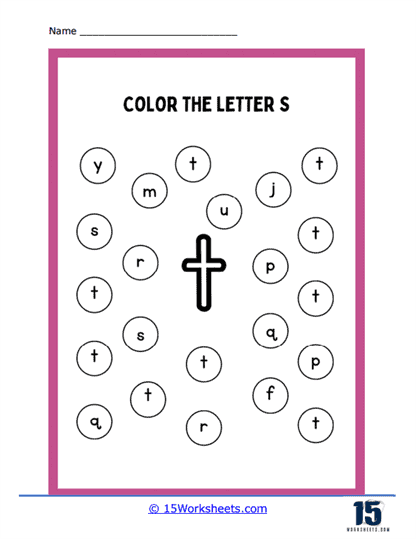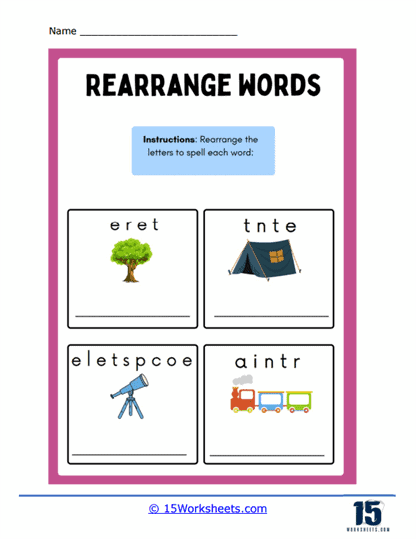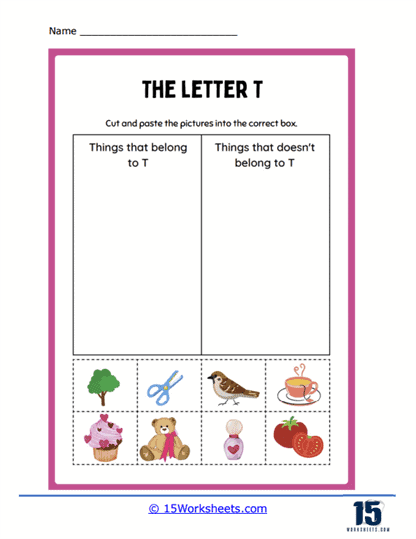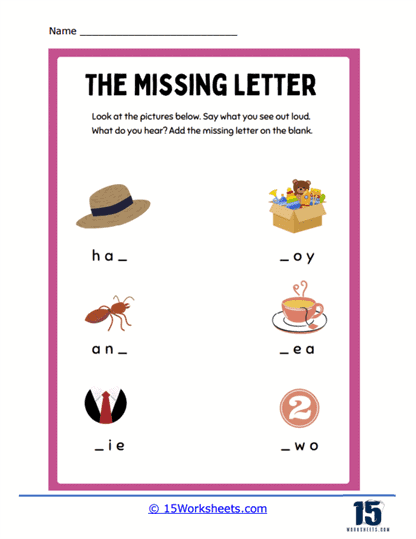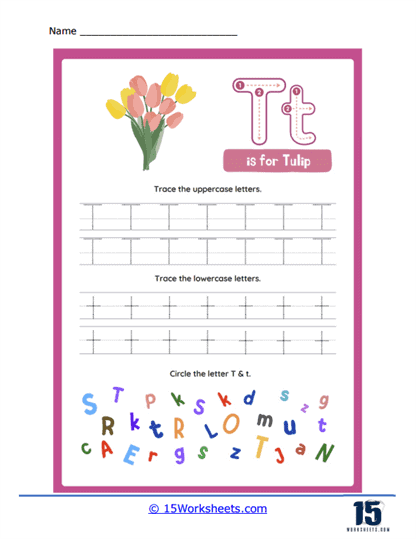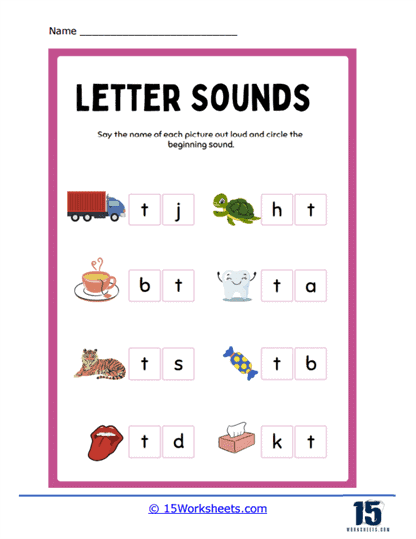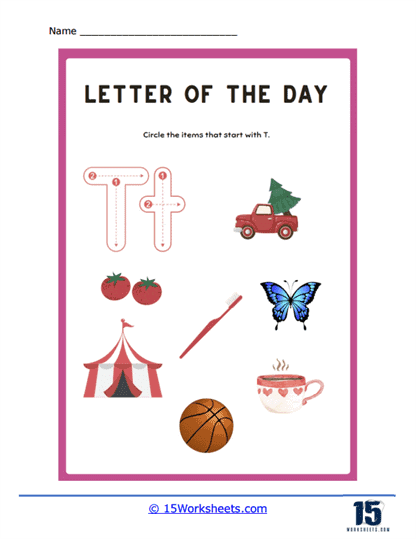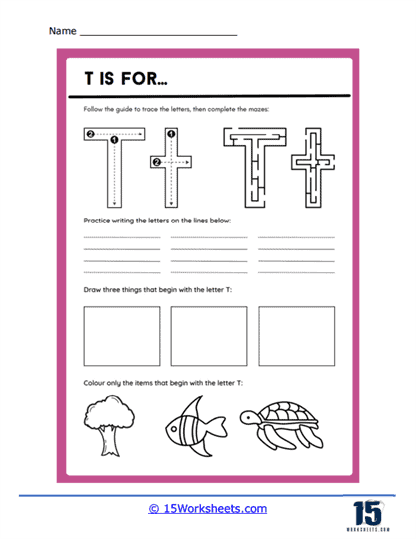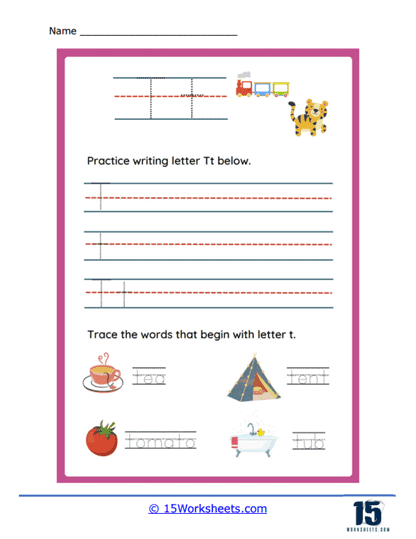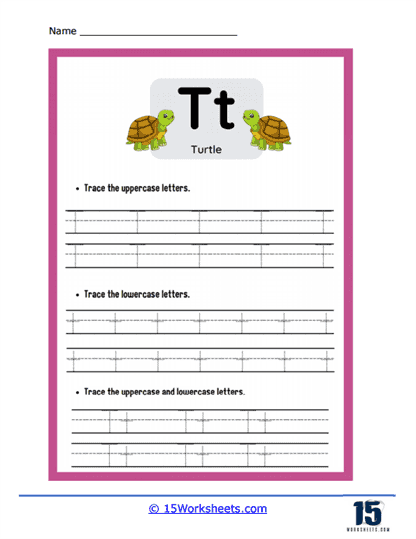Letter T Worksheets
About These 15 Worksheets
Letter T worksheets are valuable resources that tutors and teachers can utilize to effectively teach elementary students about the letter “T” and its associated skills. These worksheets offer numerous benefits that enhance the learning experience, promote literacy development, and foster cognitive growth. This article explores the advantages of incorporating letter T worksheets into educational practices and provides examples of exercises commonly found on these worksheets.
These worksheets serve as effective tools for improving letter recognition skills among elementary students. Through engaging activities such as coloring, circling, or tracing, students become familiar with the letter “T” and learn to differentiate it from other letters. Repetitive exposure to the letter “T” in various contexts strengthens students’ visual discrimination abilities, leading to improved accuracy and speed in identifying letters.
Phonics instruction plays a crucial role in helping young learners decode and read words. Letter T worksheets often include exercises that help students associate the letter “T” with its corresponding sound. These activities may involve identifying and matching pictures of objects starting with the “T” sound, completing words by adding the missing initial or medial “T” sound, and practicing writing words that contain the letter “T.” Such phonics-focused exercises enhance students’ understanding of the relationship between letters and sounds, promoting reading fluency and word recognition.
Engaging elementary students in vocabulary-building exercises is essential for expanding their word knowledge and comprehension. Letter T worksheets frequently incorporate vocabulary activities centered around words starting with the letter “T.” These exercises may include matching words with their corresponding pictures, categorizing words, or generating sentences using target words. By participating in these activities, students not only enhance their vocabulary but also develop language skills and an understanding of word usage within different contexts.
Letter T worksheets provide opportunities for students to refine their fine motor skills. Exercises involving tracing, writing, and coloring the letter “T” contribute to the development of hand-eye coordination and fine motor control. These activities play a crucial role in preparing students for more complex writing tasks and overall handwriting proficiency.
Letter T worksheets can be designed in an engaging and interactive manner to capture students’ attention and foster cognitive engagement. The inclusion of colorful illustrations, puzzles, mazes, and games within the worksheets makes learning the letter “T” enjoyable and stimulating. These creative elements promote curiosity, active learning, and sustained interest throughout the lesson.
Repetition and practice are essential for effective learning. Letter T worksheets offer ample opportunities for students to reinforce their understanding of the letter “T” through practice exercises. These may include letter tracing, letter formation, identifying words starting with “T,” and completing sentences with “T” words. Regular practice with worksheets ensures that students internalize the concepts and skills associated with the letter “T,” leading to increased retention and proficiency.
Letter T worksheets can incorporate multisensory learning strategies, catering to diverse learning styles and preferences. By engaging multiple senses, such as visual, auditory, and kinesthetic, these worksheets reinforce the learning process and make it more meaningful for students. For example, exercises may include tracing the letter “T” while saying its sound aloud, manipulating tactile materials to form the letter “T,” or engaging in group activities that involve verbalizing “T” words.
These worksheets allow for differentiation and individualized instruction, addressing the unique needs and abilities of each student. Educators can adapt the complexity and difficulty level of the worksheets to cater to students’ diverse skill levels, providing additional support or extension activities as required. This personalized approach enhances student engagement and supports their progress.
Worksheets serve as effective tools for assessing students’ understanding and progress in learning the letter “T.” Educators can review completed worksheets to evaluate students’ mastery of letter recognition, phonics, vocabulary, and writing skills related to the letter “T.” This feedback guides instructional decisions and helps identify areas that require additional instruction or reinforcement.
The skills developed through letter T worksheets extend beyond the specific letter. The foundational literacy skills, fine motor skills, and cognitive abilities cultivated through these worksheets are transferable to other areas of learning. Students can apply their enhanced letter recognition, phonics knowledge, vocabulary, and fine motor skills to reading, writing, and language tasks across various subjects.
What’s Unique About the Letter T?
Here are ten unique things about the letter “T” that people may not know:
Shape Symbolism – The uppercase letter “T” is often seen as a symbol of balance and stability due to its vertical and horizontal lines intersecting at a right angle.
Mathematical Symbol – In geometry, the letter “T” is used to represent the perpendicular symbol ⊥, indicating a right angle or perpendicularity between two lines or shapes.
Ancient Cross Symbol – The shape of the letter “T” resembles the traditional Latin cross, making it a symbolic representation of Christianity and religious faith.
Morse Code – In Morse code, the letter “T” is represented by a single dash (-), making it one of the simplest and easiest-to-recognize signals in the code.
Programming – In computer programming, the letter “T” is often used as a common abbreviation for data types such as “text” or “time.” It is also commonly used to represent “true” in boolean logic.
Greek Letter – In the Greek alphabet, the letter “T” is known as “Tau.” It is the 19th letter and has a numerical value of 300 in the Greek numeric system.
Constellation Symbol – The letter “T” is used to represent the constellation Taurus in astronomy. Taurus is one of the zodiac signs and is associated with the bull.
Semaphore Communication – In semaphore signaling, the letter “T” is represented by two flags held vertically downward. This signal is used to communicate the letter “T” in visual systems of communication.
British Royal Titles – In British royal titles, the letter “T” is used as an abbreviation for “Territorial,” indicating that a title refers to a specific geographical region.
Typographical Variation – In some fonts or typefaces, the lowercase “t” has a unique variation called a “descender,” which extends below the baseline, giving it a distinctive appearance.
These lesser-known facts about the letter “T” highlight its significance in various domains, including symbolism, communication systems, mathematics, programming, and even royal titles. Understanding these unique aspects can deepen our appreciation for the letter “T” and its multifaceted roles in different contexts.

